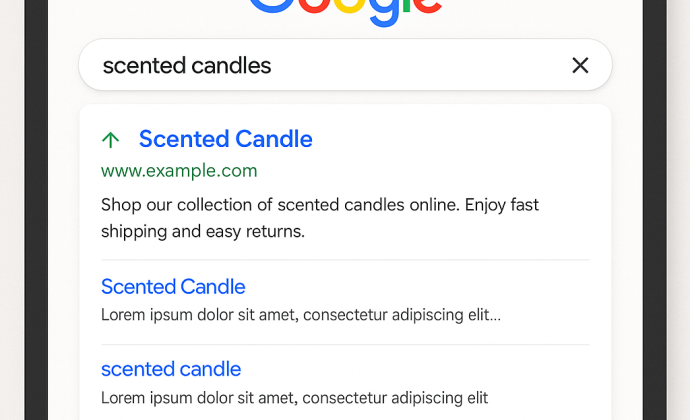Is your WooCommerce store playing hooky in attracting organic traffic? This is a competitive landscape inhabited by layers upon layers of digital businesses. You could have the perfect products paired with excellent pricing, but when customers are incapable of finding you, then it is a huge loss! So, how do you turn your WooCommerce store into a machine that constantly generates traffic into consistent growth?
The secret lies in uncovering the potent relationship between SEO optimization and the success of e-commerce. Whether you have SEO undertaken inside or choose to make use of the services of a WooCommerce SEO company, it is this duality that creates a synergistic effect, giving you a ton more revenue on the Internet.
The SEO agent is like a sales guy for your store: while you are fast asleep, your pages are easily searchable by potential customers who are actively looking for your products. Plain and simple: 53% of all website traffic comes through organic search; 68% of all online experiences begin with a search engine.
Core Strategies for WooCommerce SEO Success
Master Technical SEO Fundamentals
The technical foundation of WooCommerce stores decides whether search engines would be able to crawl, index, and rank your pages. Speed optimization should be your utmost priority-since Google ranks sites by page speed, a rise in load time by just one second can cause conversion rates to fall by 7%.
Key technical elements to focus on:
- Compress product images while using caching plugins to increase speed
- Ensure mobile responsiveness on all devices (50%+ of sales)
- Implement structured data markup to get rich snippets in search results
- Pick a reliable hosting that supports your traffic requirements
Optimize Product Pages for Revenue
Product pages are where SEO strategy leads to sales. Creating great product titles is an art, and these titles should contain target keywords naturally while addressing customer pain points. “Waterproof Bluetooth Speaker for Outdoor Adventures” will score better than “Bluetooth Speaker” because it is addressing targeted search intent.
Essential product page elements:
- Write benefit-focused titles that naturally incorporate target keywords
- A balance between SEO and copywriting to draw buyers
- Answer common customer questions and highlight product uniqueness
- Use sharp, glistening pictures with alternative texts containing focused keywords alongside descriptive file names
Transform Category Pages into SEO Powerhouses
Generally, category pages stand as your biggest SEO opportunities as they can rank for broader, high-value keywords. Bring unique and valuable information together for each category page by including a description, buying guide, and any other helpful information that positions you as an industry authority.
Category optimization tactics:
- Enrich buying guides beyond mere product listings
- Write original descriptions fitting high-volume category keywords
- Set internal linking strategies among related categories and products
- Build your authority through helpful and informative content
Leverage Content Marketing for Long-Term Growth
Blog content and resource pages can become legitimate sources of organic traffic if there is strategic internal linking. Organic long-tail keywords need to be targeted with legitimate core content: comprehensive guides and tutorials, which have less competition but higher conversion intent.
Content strategy priorities:
- Create detailed guides using long-tail keywords with high intent
- Address customers’ questions and show practical applications or scenarios on how to use the product
- Create internal links strategically from content toward relevant product pages
- Produce tutorials that subtly consider your products, such as “How to Choose Running Shoes.”
Maximize Local SEO Opportunities
If you have physical locations or serve specific geographic areas, local SEO can dramatically increase your visibility for location-based searches. This is particularly valuable for WooCommerce stores offering services like installation, repair, or consultation alongside product sales.
Local SEO essentials:
- Keep your Google Business Profile up to date with correct information.
- Courteously encourage customer reviews, as well as respond to them.
- Create landing pages specific to the locations of the different areas you serve.
- Use local keywords in your product/service descriptions.
Track Revenue-Focused Metrics
Track metrics that directly impact your business growth instead of vanity numbers. Rising organic traffic is always just a number unless it is accompanied by revenue growth. Track organic conversion rates, average order values from organic traffic, and keyword rankings for your most valuable products.
Key performance indicators to monitor:
- Organic conversion rate and average order value from search traffic
- Keyword rankings of categories that generate the highest revenue
- Pages that send the most valuable traffic and sales
- Revenue attribution from organic search channels
Remember that SEO is a marathon, not a sprint. Successful optimization with consistency is supposed to pack a compound effect, leading to sustained growth that further diminishes the reliance on paid advertising while building consistent business value. Ultimately, whether you do this yourself or use the assistance of an experienced WooCommerce SEO agency,
WooCommerce SEO fits perfectly into the WooCommerce ecosystem, thereby ensuring business growth isn’t just a theoretical hypothesis but a concrete action strategy commanding successful online retailers to sweep the markets. By implementing these strategies systematically, you’re not just improving search rankings; you’re building a traffic-generating asset that grows your business 24/7.





